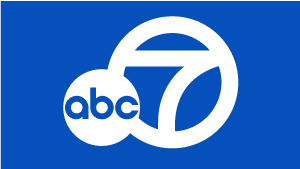Power shutoff food safety: Save it, or throw it out?

SAN FRANCISCO (KGO) -- When the power goes out, one of the most important decisions everyone faces is what food is safe to keep and what food needs to be thrown out.
The USDA advises that your refrigerator will keep food safe for up to 4 hours during a power outage.
They also have several important tips about general food safety during a power outage:
- Keep the door closed as much as possible
- Throw out perishable food (meat, poultry, eggs, and leftovers) after 4 hours without power
- After an outage, never taste food to determine its safety
- When in doubt, throw it out!
They say that you will have to evaluate each item separately after an outage.
Below is a list of their recommendations:
Refrigerated Food (Held above 40 degrees for more than 2 hours)
Meat, poultry, seafood:
Raw or leftover cooked meat, poultry, fish, seafood, soy meat substitutes - Discard
Thawing meat or poultry - Discard
Salads: Meat, tuna, shrimp, chicken, or egg salad - Discard
Gravy, stuffing, broth - Discard
Lunchmeats, hot dogs, bacon, sausage, dried beef - Discard
Pizza with any topping - Discard
Canned hams labeled "Keep Refrigerated" - Discard
Canned meats and fish, opened - Discard
Casseroles, soups, stews - Discard
Cheese:
Soft cheeses: blue/bleu, Roquefort, Brie, Camembert, cottage, cream, Edam, Monterey Jack, ricotta, mozzarella, Muenster, Neufchatel, queso blanco, queso fresco - Discard
Hard cheeses: Cheddar, Colby, Swiss, Parmesan, provolone, Romano - Keep
Processed cheeses - Keep
Shredded cheeses - Discard
Low-fat cheeses - Discard
Grated Parmesan, Romano, or combination (in can or jar) - Keep
Dairy:
Milk, cream, sour cream, buttermilk, evaporated milk, yogurt, eggnog, soy milk - Discard
Butter, margarine - Keep
Baby formula, opened - Discard
Eggs:
Fresh eggs, hard-cooked in shell, egg dishes, egg products - Discard
Custards and puddings, quiche - Discard
Fruits:
Fresh fruits, cut - Discard
Fresh fruits, uncut - Keep
Fruit juices, opened - Keep
Canned fruits, opened - Keep
Dried fruits, raisins, candied fruits, dates - Keep
Sliced or shredded coconut - Discard
Sauces, Spreads, Jams:
Opened mayonnaise, tartar sauce, horseradish - Discard
(if above 50 F for more than 8 hrs)
Peanut butter - Keep
Jelly, relish, taco sauce, mustard, catsup, olives, pickles - Keep
Worcestershire, soy, barbecue, hoisin sauces - Keep
Fish sauces, oyster sauce - Discard
Opened vinegar-based dressings - Keep
Opened creamy-based dressings - Discard
Spaghetti sauce, opened - Discard
Bread, cakes, cookies, pasta, grains:
Bread, rolls, cakes, muffins, quick breads, tortillas - Keep
Refrigerator biscuits, rolls, cookie dough - Discard
Cooked pasta, rice, potatoes - Discard
Pasta salads with mayonnaise or vinaigrette - Discard
Fresh pasta - Discard
Cheesecake - Discard
Breakfast foods: waffles, pancakes, bagels - Keep
Pies and pastry:
Cream filled pastries - Discard
Pies: custard, cheese-filled, or chiffon; quiche - Discard
Fruit pies - Keep
Vegetables:
Fresh vegetables, cut - Discard
Fresh vegetables, uncut - Keep
Fresh mushrooms, herbs, spices - Keep
Greens, pre-cut, pre-washed, packaged - Discard
Vegetables, cooked - Discard
Tofu, cooked - Discard
Vegetable juice, opened - Discard
Baked potatoes -Discard
Commercial garlic in oil -Discard
Potato salad -Discard
Casseroles, soups, stews -Discard
Frozen Food:
A full freezer will hold a safe temperature for approximately 48 hours. If it is half full, it only holds food safely for one day, but the door has to stay closed.
The food safety website says it IS ok to refreeze some foods IF it still contains ice crystals or is at 40 degrees F or colder. The quality may suffer, but in most cases it is safe. If the food is thawed of at a temperature above 40 degrees F for more than two hours, it will likely have to be discarded.
This chart shows what to do with different frozen foods depending on the temperature and if it has thawed.
Never taste food to determine if is still good or not, health officials warn.
For more information go to this website


